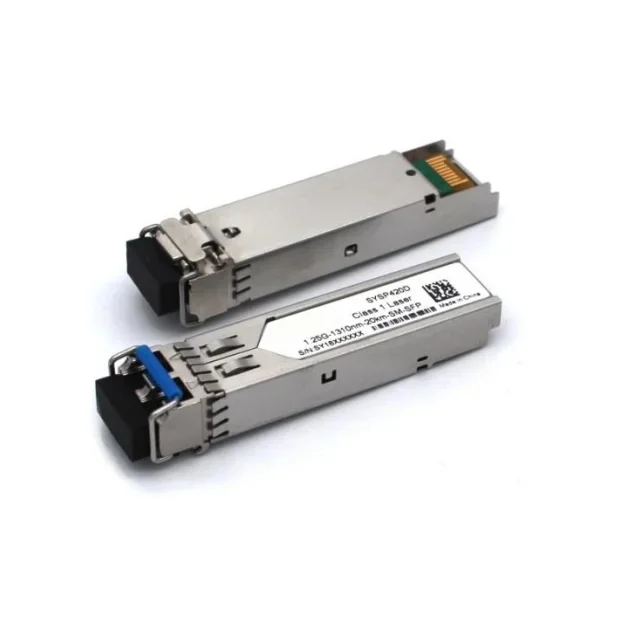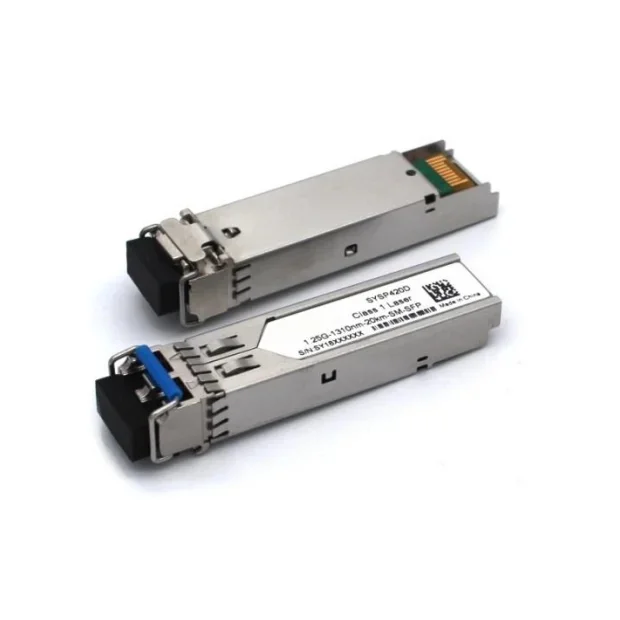Optical module power: a key parameter in the field of optical communications

An optical module is a device used for optical communications and optical networks. It can convert electrical signals into optical signals and then transmit them through optical fibers. The power of the optical module is a very important parameter, which directly affects the performance and usage of the optical module. In this article, we will explore optical module power and its related issues.

1. Definition of optical module power
The power of the optical module refers to the electrical power consumed by the optical module when it is working. The power of an optical module is usually described by two parameters: transmit power and receive power. Transmit power refers to the electrical power consumed when sending optical signals while receiving power refers to the electrical power consumed when receiving optical signals.
2. Measurement of optical module power
The measurement of optical module power is usually done using an optical power meter. An optical power meter is an instrument specifically used to measure optical power. It can measure the transmit power and receive power of an optical module. When measuring power, you need to pay attention to the following points:
The optical power meter should be calibrated before measurement to ensure its accuracy.
An appropriate wavelength range should be selected during measurement to ensure the accuracy of the measurement results.
When measuring, the probe of the optical power meter should be aligned with the optical port of the optical module to ensure the accuracy of the measurement results.
3. Factors affecting optical module power
The power of the optical module is affected by many factors, including:
Operating temperature: The operating temperature of the optical module has a great impact on its power. Normally, the power of an optical module decreases as the temperature increases.
Working voltage: The working voltage of the optical module will also affect its power. Normally, the power of an optical module increases as the operating voltage increases.
Light source: The light source of the optical module also affects its power. Different light sources have different power characteristics, which will affect the power of the optical module.
Size of the optical module: The size of the optical module also affects its power. Typically, larger optical modules have higher power.
Manufacturing process: The manufacturing process of the optical module will also affect its power. Different manufacturing processes will affect the power of optical modules.

4. Application of optical module power
Optical module power is widely used in optical communications, data centers, optical fiber sensing and other fields. In optical communication systems, high-stability optical module power can ensure the transmission quality of optical signals in optical fibers, thereby achieving long-distance, high-speed data transmission. In data centers, efficient and stable optical module power is crucial for large-scale data transmission and processing. In addition, optical module power also plays an important role in the field of optical fiber sensing to achieve accurate detection and measurement of optical signals.
5. Optimization of optical module power
Optimize light source stability
The stability of the light source directly affects the stability of the optical module power. By using high-quality, high-stability light source devices, the output power stability of the optical module can be effectively improved, thereby improving the transmission performance of the optical communication system.
Precise control of drive current
The accuracy of the driving current has a direct impact on the modulation depth and output power of the optical module power. Optimizing the control algorithm and circuit design of the driving current can achieve precise control of the power of the optical module and improve the stability and transmission quality of the system.
Application of temperature compensation technology
Temperature has a great impact on the power of optical modules, especially in environments with a wide operating temperature range. The use of temperature compensation technology can effectively suppress the impact of temperature on the power of optical modules and improve the stability of the system in different temperature environments.
Optimize optical module structural design
By optimizing the structural design of the optical module, such as optical design, electrical design, and thermal design, the energy consumption of the optical module can be reduced, the efficiency and power output of the optical module can be improved, and the performance of the entire optical communication system can be optimized.
Real-time monitoring and feedback adjustment
Introducing real-time monitoring and feedback adjustment technology, the optical module power can be monitored in real time and automatically adjusted based on the monitoring results to ensure the stability and accuracy of the optical module power.
Optical module power is a key parameter in optical communication systems, and its stability and accuracy are crucial to the performance of the entire system. With the continuous development of optical communication technology, the power requirements for optical modules are also constantly increasing. Therefore, we have reason to believe that in the near future, optical module power will usher in more innovations and breakthroughs, injecting new vitality into the development of optical communication technology.
I hope this article can help you better understand the importance of optical module power in the field of optical communications, and look forward to witnessing the bright future of optical communications technology with you.
https://www.fineconnco.com/Optical-module-power-a-key-parameter-in-the-field-of-optical-communications.html
- Art
- Causes
- Crafts
- Dance
- Drinks
- Film
- Fitness
- Food
- Παιχνίδια
- Gardening
- Health
- Κεντρική Σελίδα
- Literature
- Music
- Networking
- άλλο
- Party
- Religion
- Shopping
- Sports
- Theater
- Wellness


